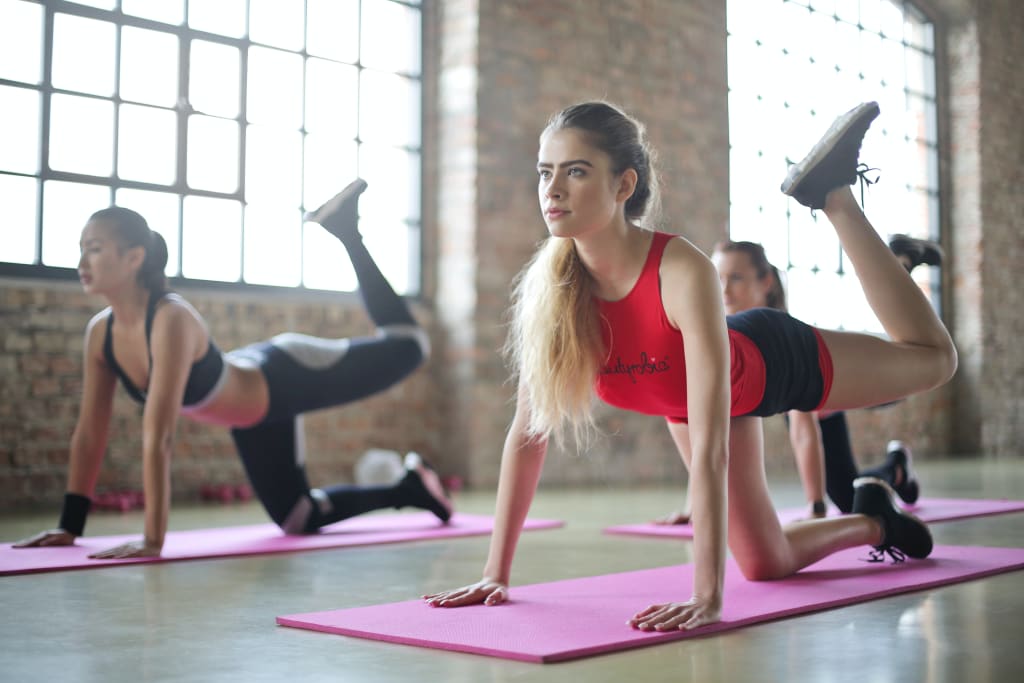What Are The Six Major Fitness Skills
The Six Major Fitness Skills

There are six major fitness skills that everyone should master to lead a healthy and active lifestyle. These skills are cardiovascular endurance, muscular strength, muscular endurance, flexibility, body composition, and power. Each of these skills is important in its way and honing all of them will help you create a well-rounded fitness routine. In this blog post, we will explore each of these skills in detail and provide some tips on how you can improve them.
Cardiovascular endurance
There are six major fitness skills: cardiovascular endurance, muscular strength, muscular endurance, flexibility, body composition, and power. All six of these skills are important for overall fitness and health.
Cardiovascular endurance is the ability of the heart and lungs to work together to supply oxygen to the muscles for an extended period. This type of endurance is important for activities such as running, biking, swimming, and hiking.
Muscular strength is the ability of the muscles to produce force. This type of strength is important for activities such as lifting weights and doing pull-ups.
Muscular endurance is the ability of the muscles to sustain repeated contractions or movements over an extended period. This type of endurance is important for activities such as running, biking, swimming, and hiking.
Flexibility is the range of motion of a joint or group of joints. This type of fitness is important for activities such as yoga, Pilates, and stretching.
Body composition is the ratio of fat mass to lean mass in the body. This type of fitness is important for people who want to lose weight or gain muscle.
Power is the ability to generate force quickly. This type of fitness is important for activities such as sprinting and jumping.
Muscular strength
There are six major fitness skills: muscular strength, muscular endurance, cardiovascular endurance, flexibility, body composition, and power.
Muscular strength is the ability of your muscles to generate force. The more force your muscles can generate, the stronger you are. To increase muscular strength, you need to lift heavier weights and/or do more repetitions.
Muscular endurance is the ability of your muscles to sustain repeated contractions over time. The more endurance your muscles have, the longer they can keep working before getting tired. To increase muscular endurance, you need to do more repetitions with lighter weights.
Cardiovascular endurance is the ability of your heart and lungs to supply oxygenated blood to your muscles for sustained periods. The better your cardiovascular endurance, the longer you can exercise without getting tired. To increase cardiovascular endurance, you need to do aerobic activities like running, swimming, or biking for long periods.
Flexibility is the range of motion of your joints. The more flexible you are, the greater range of motion your joints have. To increase flexibility, you need to do stretching exercises regularly.
Body composition is the ratio of fat mass to lean mass in your body. A healthy body composition has a lower ratio of fat mass to lean mass. To improve body composition, you need to lose fat and/or gain muscle mass.
Power is the ability of your muscles to generate force quickly. The more powerful you are,
Muscular endurance
Muscular endurance is the ability of a muscle or group of muscles to sustain repeated contractions against resistance for an extended period. The level of muscular endurance required for any given activity will vary depending on the intensity and duration of the activity, as well as the individual’s level of fitness.
There are several ways to improve muscular endurance, including resistance training, interval training, and circuit training. Resistance training helps to build muscle strength and size, which in turn can help to improve muscular endurance. Interval training alternates periods of high-intensity activity with periods of low-intensity or rest, which can help to improve both cardiovascular and muscular endurance. Circuit training combines resistance exercises with cardiovascular and plyometric exercises in a continuous circuit, providing an intense workout that can help to improve both muscular strength and endurance.
Flexibility
Flexibility is a critical fitness skill that allows us to perform daily tasks with ease and reduces the risk of injury. It also helps improve our overall range of motion, making us more mobile and agile.
There are many ways to improve flexibility, but some of the most effective methods include static stretching, dynamic stretching, and foam rolling.
Static stretching is a great way to gradually increase your flexibility over time. To do a static stretch, simply reach out and grab hold of a stationary object like a doorframe or table leg, and then slowly lean forward until you feel a gentle stretch in the muscles around the joint. Hold this position for 20-30 seconds before releasing.
Dynamic stretching is another excellent way to improve flexibility. This type of stretching involves moving your joints through their full range of motion repeatedly. A good dynamic stretch for the legs would be high knees or butt kicks. Start by standing tall with your feet shoulder-width apart, then bring one knee up as high as you can while keeping your other leg straight. Return to the starting position and repeat with the other leg. Do 10-15 repetitions on each side.
Foam rolling is also an excellent way to improve flexibility and range of motion. Foam rolling helps release knots and tension in the muscles, which can lead to improved circulation and reduced soreness. To foam roll, simply place a foam roller under the muscle group you’d like to target (legs, back
Body composition
Body composition is the percentage of fat versus lean mass in the human body. While different people have different ideal body compositions, most experts agree that a healthy body composition includes a higher percentage of muscle and a lower percentage of fat.
There are several ways to measure body composition. The most common method is skinfold testing, which involves pinching the skin at specific points on the body and then measuring the thickness of the skinfold with calipers. Other methods include bioelectrical impedance analysis (BIA), dual-energy X-ray absorptiometry (DEXA) scans, and underwater weighing.
Generally speaking, the higher your muscle mass and the lower your fat mass, the better your body composition. This is because muscle is more metabolically active than fat, meaning it burns more calories even at rest. A higher muscle mass also helps to keep bones strong and can help protect against conditions like obesity and type II diabetes.
Power
There are six major fitness skills: strength, power, endurance, flexibility, balance, and coordination. Each of these skills is important for overall fitness and health.
Strength is the ability to move a heavy object. Power is the ability to move an object quickly. Endurance is the ability to keep moving even when you’re tired. Flexibility is the ability to move your body through a wide range of motion. Balance is the ability to stay upright even when you’re off-center. Coordination is the ability to use your body parts together smoothly.
All of these skills are important for different reasons. Strength helps you lift heavy objects or do other activities that require force. Power helps you do things quickly, like sprinting or jumping. Endurance helps you keep going even when you’re tired, so you can avoid getting winded during activities like running or biking. Flexibility allows you to do things like touch your toes or tie your shoes without difficulty. Balance helps you avoid falling, and coordination helps you do activities like catching a ball or typing on a keyboard accurately






Comments
There are no comments for this story
Be the first to respond and start the conversation.